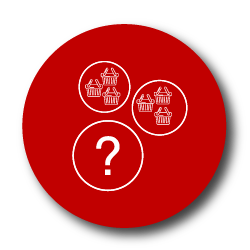While understanding consumer behaviour is a complex task, it can allow you to analyse and target your consumers more effectively. You can use this information to cluster your target market based on their shopper behaviour using behavioural clustering or segmentation.
But what insights can you generate from shopper behaviour, basket composition, lifestyles, loyalty and product preferences? And how can this help you to facilitate a customer-centric approach?
What is consumer behavior?
Consumer behaviour describes the way that individuals and organisations select and consume products and services. This practice focuses on psychology, motivations, attitudes and overall behaviour. When analysing consumer behaviour, your business needs to consider how your shoppers move around your store.
It is important to know how they evaluate, select and purchase products as well as how they reason between different alternatives (retailers, brands and products). The way that your shoppers are influenced by their environment and targeted marketing is also important.
The consumer behaviour of your shoppers is influenced by:
- Marketing factors: The marketing mix influences consumer decision making through price, promotional tactics, product packaging, product design and distribution.
- Personal factors: Your shopper’s interests, attitudes, values and opinions. These factors are influenced by their demographic characteristics such as age, gender, income and so on.
- Psychological factors: Your shopper’s reactions to products, brands, marketing activities and store experience is based on their perceptions and attitudes.
- Social factors: The environment in which your shopper operates will influence their product choices and overall purchasing behaviour. Friends, family, social media, income group and level of education are social factors that influence buying behaviour.
- Situational factors: Environmental elements in the physical surrounding of your shopper at the time of purchase. This may include the business of the store, availability of staff and product displays.
- Cultural factors: These factors such as religion and cultural group influence product preferences and buying behaviour.
How to collect consumer behaviour data
If you are a retailer, you will generally have access to basic POS and loyalty data. This will be sufficient to conduct a basic behavioural cluster analysis. If, however, you are looking to take this activity to the next level, here are some extra areas from which you could collect data:
- Market research: You can set up surveys and questionnaires to answer specific questions about shopper behaviour and preferences.
- Keyword research: Keyword research uses search engine optimisation (SEO) techniques to understand consumers. This will provide information about what your customers are interested in and what they would like to know. You can also find out what language they are using and include these keywords in behavioural clustering and marketing activities.
- Google Analytics and Trends: You can use analytics to analyse your online traffic. This will give you information on your consumer’s location, interests, product preferences and demographics. You can also use Google Trends to understand which products are becoming more popular and analyse your behavioural clusters to determine which products you should offer.
- Competitor analysis: You can conduct a competitor analysis to understand which products your behavioural segments are shopping for and how they go about this process.
- Government data: Census data can provide you with information on demographics, trends and patterns within the population. You can use this information to supplement behavioural clustering and profile certain consumer segments.
- Social media: The odds are that your customers use social media regularly. With the right tools, you can use this platform to discover information about how your clusters identify, select, use and evaluate your products to understand your behavioural clusters better.

When should you implement behavioural clustering?
You should implement behavioural clustering in your business when customer-centricity becomes a leading strategy. This approach focuses on building your organisation around your customers and their wants and needs. Your business should focus on the perspective of your customers and use their input and shopper behaviour to tailor the retail experience.
Once you have gathered information on your customers, you can implement behavioural clustering to create shopper profiles that can be understood and targeted effectively.
Behavioural clustering facilitates the different functions of category management working together to optimise operational efficiencies. Before you segment your market, you need to meet the following criteria:
- Measurable: The size of your target market should be quantifiable so that you can make an informed decision on the need for segmentation. Smaller market segments can be identified, however, you will have to determine whether they are worth defining and targeting.
- Distinguishable: Clear differences must exist between market segments in order to define them.
- Sizeable: Your market must be large enough to require behavioural segmentation where each segment is profitable enough to be analysed and targeted individually.
- Profitable: Market segments must have identifiable profitability to justify specialised marketing efforts.
- Accessible: Each market segment must be responsive enough to the marketing efforts of your business.
Once you have decided to utilise behavioural clustering, and your market meets the criteria above, there are two approaches that you can take.
Top-down behavioural clustering
This approach uses behavioural or demographic characteristics to define store groupings. For example, you can use store size to group your stores into small, medium and large store clusters. You could also use other variables such as shopping frequency, brand loyalty, income-group or geographic location.
You can use top-down behavioural clustering to make inferences about consumer behaviour based on specific characteristics. That said, it’s important to note that this approach does not consider demand-level data, consumer preferences or industry trends that may not be defined by categorical information.
Bottom-up behavioural clustering
This customer-centric, multivariate approach considers demand patterns to cluster stores. Sales data for the product category is used to identify patterns in consumer demand. This will help you to generate insights and forecasts from your behavioural clusters for long term strategic planning.
You can use demographics and behavioural characteristics in conjunction with your sales data to understand your target market in depth.
Store format and space allocation can also be adapted to align with the clusters and subsequent consumer demand for the category. When this is considered, the variation of demand across categories must also be factored in. Therefore, a behavioural cluster analysis could be conducted for each category in your store. This allows for ranking of categories and an understanding of the best strategy for each.
This approach reflects the true nature of consumer demand and an understanding that customers do not shop all categories in the same way. It may also require an element of extra time and money on your part to execute fully.

How does behavioural clustering work?
Behavioural clustering is an unsupervised machine learning application. Once you have chosen to conduct a cluster analysis, you need to select an appropriate clustering algorithm. For this application, we’d recommend partition-based or hierarchical clustering.
Behavioural clustering is used to group stores or product categories based on similarities in shopper behaviour. POS, loyalty and shopper basket data can be used to cluster consumers and build predictive models that automatically update behavioural segments on a regular basis. This ensures that clusters are updated along with changes in consumer behaviour and industry trends.
You can also use behavioural clustering as an online tool if you have a website to provide content that your customers are most interested in. This will keep them on your website for longer, encourage them to make a purchase and ensure that they return.
Behavioural clustering uses the proximity of attributes and similarity of buying behaviour to group customers for a particular store or product category. You can extract information and insights from your behavioural clusters to profile, understand and target your consumers.
Once you have created your clusters, you can analyse each grouping to identify demographic, psychographic and behavioural patterns. This is possible because, to conduct a behavioural cluster analysis, you would generally have access to basic demographic and psychographic data. For this reason, you can combine behavioural and demographic clustering to use multiple variables to group your customers.
Once you have assigned each store to a cluster, you can apply specialised customer-centric strategies to assist with assortment planning, advertising, pricing, merchandising and overall promotion plans that are tailored to each cluster.
For example, behavioural characteristics linked with demographic factors may reveal that particular age or income-groups have an affinity for a specific product category or brand. This would allow you to make sure that these products are offered in the stores for the cluster. This will also influence how you display, promote, price and position them within your store.
As for the benefits of behavioural clustering, it will allow you to identify similar demand patterns within your store groupings to develop a truly customer-centric marketing mix.
On the other hand, a potential challenge of this approach is the loss of operational efficiency, time and money if you create too many clusters. The quantification of various behavioural attributes may also be tricky for your business.
For example, retailers may have different definitions of regular stock-up or emergency top-up shopping trips. Brand loyalty may also be defined by particular retailer-defined criteria. Therefore, it is important that these attributes are quantified and defined within your organisation in order to measure and cluster them.
Conclusion
Behavioural clustering is part of a broad process that looks at the market as a whole to improve strategic processes. Various approaches can be taken when using this clustering method, but understanding the behaviour of your shoppers and adopting a customer-centric philosophy should be your focus.
Need assistance with your clustering efforts? DotActiv can help. Find out more about our clustering services here or book your free meeting with a DotActiv expert.



